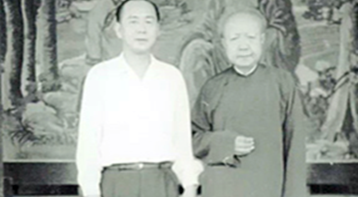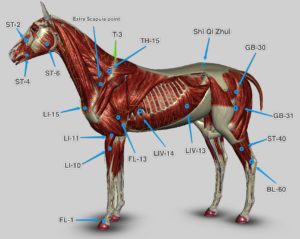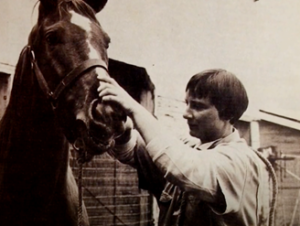
The History of Animal Acupuncture
For nearly 3000 years, from the Zhou dynasty and the reign of Emperor Mu around 930 B.C., up until the Yuan dynasty of the 11th century, Chinese medicine was used sparingly on large animals. Much of the focus was on the treatment of horses since they were so essential to the military. After the 11th century, there are records of certain publications that briefly referred to animal acupuncture, but over this long span of time there were very few. Unfortunately, no comprehensive charts or texts survived this period. The popularity, and evidently the use of acupuncture for the treatment of animals, primarily for horses but also for some other farm animals, eventually diminished to the point that after the 11th Century, nothing was mentioned in any of the major texts. It is important to note that there never were any charts, texts, or any known references regarding the treatment of dogs or cats with acupuncture.
From the time of Emperor Mu, if we fast-forward over 2,500 years to the end of the 16th century in Europe, we discover the very first (in the Western world) comprehensive book on the anatomy of a non-human species entitled Anatomia del Cavallo (Anatomy of the Horse), written by Carlo Ruini. The first veterinary college (of the Occidental world) was founded in Lyon, France, in 1762.
The origins of animal acupuncture in China were nearly 3000 years ago, but the beginnings of western veterinary medicine were just over 400 years ago. There are also sixteenth century accounts from Jesuit missionaries of acupuncture being done in the East, and many French clinicians embraced acupuncture at that time. However, animal acupuncture was not practiced in Europe at all.
 Animal medicine was explored in large animals in ancient China, particularly focusing on horses, over an extensive period. Most of the most valuable texts have been lost for centuries. Most of this work in China ended by the 11th Century and animal acupuncture was not explored again until 1975! This was 4 years after the re-introduction of animal acupuncture, which took place in the United States! The re-emergence of Animal Acupuncture did not occur in Asia but in the United States. And it was acupuncturists, not veterinarians, who introduced Animal Acupuncture into the United States, and thereby re-introduced it to the world.
Animal medicine was explored in large animals in ancient China, particularly focusing on horses, over an extensive period. Most of the most valuable texts have been lost for centuries. Most of this work in China ended by the 11th Century and animal acupuncture was not explored again until 1975! This was 4 years after the re-introduction of animal acupuncture, which took place in the United States! The re-emergence of Animal Acupuncture did not occur in Asia but in the United States. And it was acupuncturists, not veterinarians, who introduced Animal Acupuncture into the United States, and thereby re-introduced it to the world.
The National Acupuncture Association (NAA) was the first formal professional organization for acupuncturists in the US, organized as a non-profit corporation. In 1971, the National Acupuncture Association (NAA) created its Animal Acupuncture Research division to understand if acupuncture had a practical use for treating diseases and functional disorders in large and small animals. Members of the NAA team, John Ottaviano and Gene Bruno, had been treating their own dogs and friends’ animals with good results. Dr. William Prensky, the President of the NAA, put Ottaviano and Bruno in charge of the Animal Acupuncture Division.

In 1972, a small animal veterinarian named Richard Glassberg, DVM, contacted the NAA about his interest in using acupuncture to treat small animals. He agreed to work with Ottaviano and Bruno on comparative anatomy if they taught him how to treat animals using acupuncture. They began working with Dr. Glassberg, and later with other veterinarians, including Dr. Alice DeGroot and Dr. Joel Rossen, and others. This led to Ottaviano and Bruno working with several veterinarians and treating at five small animal clinics, several locations for horses, and finally the racetracks, all with the permission of the California Veterinary Medical Board and the California Horse Racing Board.

One of their goals at the time was to teach a core group of veterinarians the principals of Chinese medicine and acupuncture. Some of these veterinarians began to start treating animals, and in the summer of 1973, the NAA established the National Association of Veterinary Acupuncture (NAVA). In 1974, with help from NAA’s Veterinary Acupuncture Research Team and working with other veterinarians who were exploring acupuncture for animals, the International Veterinary Acupuncture Society (IVAS) was formed. Today, IVAS has training seminars for Veterinarians in North America and Europe and Australia. Later, the American Academy of Veterinary Acupuncture (AAVA) was formed by members of IVAS.

In 2013, Gene Bruno, OMD, LAc, and Joel Rossen, DVM, CVA, established the American Board of Animal Acupuncture (ABAA). The American Board of Animal Acupuncture certifies acupuncturists in animal acupuncture.
The first complete course in animal acupuncture for licensed acupuncturists was developed and taught by acupuncturist Noreen Javornik and her associates at Tai Sophia Institute in the late 1990’s. This course was last offered in 2015. In 2001, Noreen was joined by Randi Sobel, LAc, a graduate of Javornik’s program who worked was an instructor in the program for 15 years. The International Academy of Animal Acupuncture offered a course for licensed acupuncturists in 2014-15. Two courses in animal acupuncture were offered at Phoenix Institute of Herbal Medicine & Acupuncture in 2021-22 and 2023-24. Currently, the National Academy of Animal Acupuncture is offering the only courses that are approved by the ABAA.
